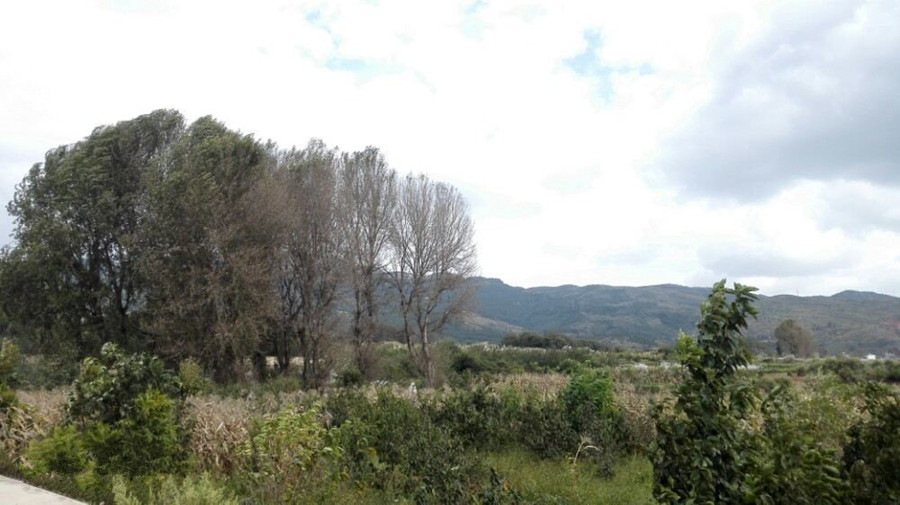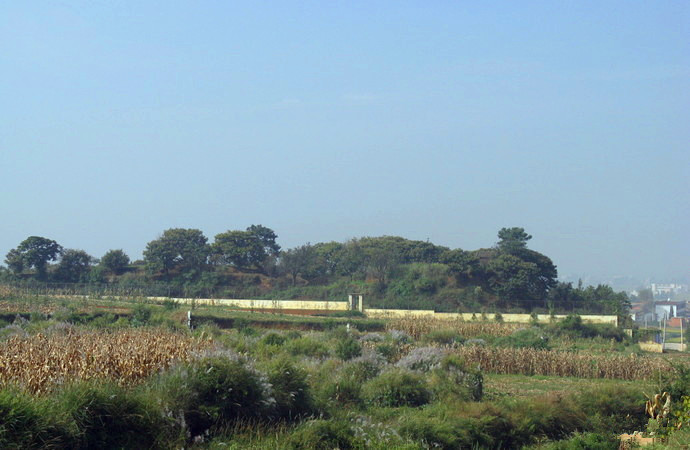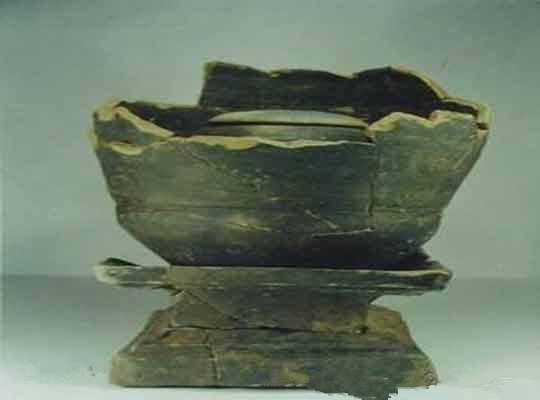Batatai Ancient Tombs in Qilin District, Qujing
Batatai Ancient Tombs (八塔台古墓群) are located approximately 12 kilometers east of Qujing City (曲靖市) in Dongjia Village (董家村), Zhujie Township (珠街乡), at the eastern bank of the Nanpan River (南盘江), at the foot of Wutai Mountain (五台山). This ancient site features eight distinct earthen mounds, varying in shape and size, that are closely situated together. The entire area covers about 5,000 square meters and consists of eight oval-shaped burial mounds, forming a unique archaeological site.
The excavation of the Batatai Ancient Tombs has proven that Qujing is one of the cradles of ancient civilization in Yunnan (云南). Over 2,000 years ago, the people here created a brilliant culture. The inhabitants had already entered the Bronze Age, as evidenced by the over 1,000 artifacts unearthed, which include weapons, production tools, daily necessities, ornaments, musical instruments, and currency. These artifacts are made from materials such as bronze, iron, pottery, jade, and stone, including weapons like knives, swords, halberds, and spears; cooking and drinking vessels such as tripods, pots, jars, and bowls; ornaments like bracelets, beads, and buckles; and musical instruments like bronze drums and bells.
Basic Information
- Chinese Name: 八塔台古墓群
- English Name: Eighttower Tomb Group
- Location: Dongjia Village (董家村), Zhujie Township (珠街乡), 12 kilometers east of Qujing City (曲靖市)
- Total Area: 5,000 square meters
- Historical Period: Pre-Qin period (先秦时期)
- Cultural Heritage Status: Provincial-level cultural heritage protection unit
Overview
The tomb group is situated on a gentle slope, comprised of eight independently arranged oval burial mounds, totaling an area of about 5,000 square meters. Between 1977 and 1982, archaeological teams from Yunnan province conducted seven excavations in collaboration with the cultural management department of Qujing. The first mound was fully excavated, while the second was partially uncovered. Hundreds of tombs from various periods were discovered, including 304 cremation burials, 220 pit tombs, and over 30 mound tombs. These tombs date back much earlier than the era of Zhuge Liang (诸葛亮), roughly to the Spring and Autumn period or earlier.
The tombs exhibit a variety of types, overlapping and intermingling, creating a cultural accumulation layer spanning over 2,000 years, from the Pre-Qin period to the Song (宋), Yuan (元), and Ming (明) dynasties. Among the 30 tombs from the Spring and Autumn and Warring States periods, a significant number of Bronze Age artifacts were unearthed, marking a first in Yunnan’s bronze archaeology. Of the excavated tombs, about 500 were found within the second mound’s 700 square meter area, which is only half the size of the base of the second mound.
According to archaeologists, the formation of these mounds resulted from the burial practices of early inhabitants. After the death of the earliest ancestors, they were buried here, forming earth mounds above ground. Subsequent burials included pit tombs and later cremation burials. The stratigraphic profiles from excavations reveal that the dome-shaped mounds overlapped, while rectangular pit tombs disturbed the underlying mounds. Among the excavated tombs, over 30 belong to the Spring and Autumn and Warring States periods, 220 to the Warring States to Han (汉) periods, and 304 to the Song, Yuan, and Ming periods.
Cultural Significance
The excavation of the Batatai Ancient Tombs firmly establishes Qujing as one of the cradles of ancient civilization in Yunnan. Over 2,000 years ago, the people here developed a rich culture and had already entered the Bronze Age. Many artifacts reflect both Central Plains culture and maintain the unique style of Yunnan culture. Furthermore, they indicate that as early as the Pre-Qin period, Qujing was a crucial passage for the dissemination of Central Plains culture into Yunnan. The diversity of burial types and accompanying artifacts illustrates the changes in burial customs over time and hints at the evolution of ethnic components in Yunnan.
Legend of Batatai
Local folklore suggests that the name “Batatai” originated from the legendary figure Zhuge Liang, who is said to have built a fortification here to control the land’s spirit during his southern campaigns. Despite the lack of concrete evidence, the area’s long-standing designation as “Batatai” carries weight in local traditions. According to legend, ancestors once attempted to create a passage through the mounds, but their efforts repeatedly failed. It wasn’t until a celestial being intervened that a road was successfully opened through the mounds.
How to Get There
Traveling from Kunming (昆明) to Qujing (曲靖) can be accomplished via the Kunming-Qujing Intercity Railway, which takes about 1.5 hours. From Qujing, take a local bus to Zhujie Township (珠街乡) and then walk approximately 1.5 kilometers to reach the Batatai Ancient Tombs.
Travel Tips
- Best Time to Visit: The ideal seasons for visiting are spring and autumn. Summer months can be rainy, potentially impacting road conditions and leading to mudslides.
- Climate: Qujing has a subtropical highland monsoon climate. The hottest month is July with an average temperature of 19°C, while January is the coldest month with an average of 14°C.
- Preparation: Wear comfortable walking shoes and bring water, as exploring the site may require some walking.
The Batatai Ancient Tombs offer a fascinating glimpse into Yunnan’s ancient civilization, showcasing the rich history and culture of the region.

















